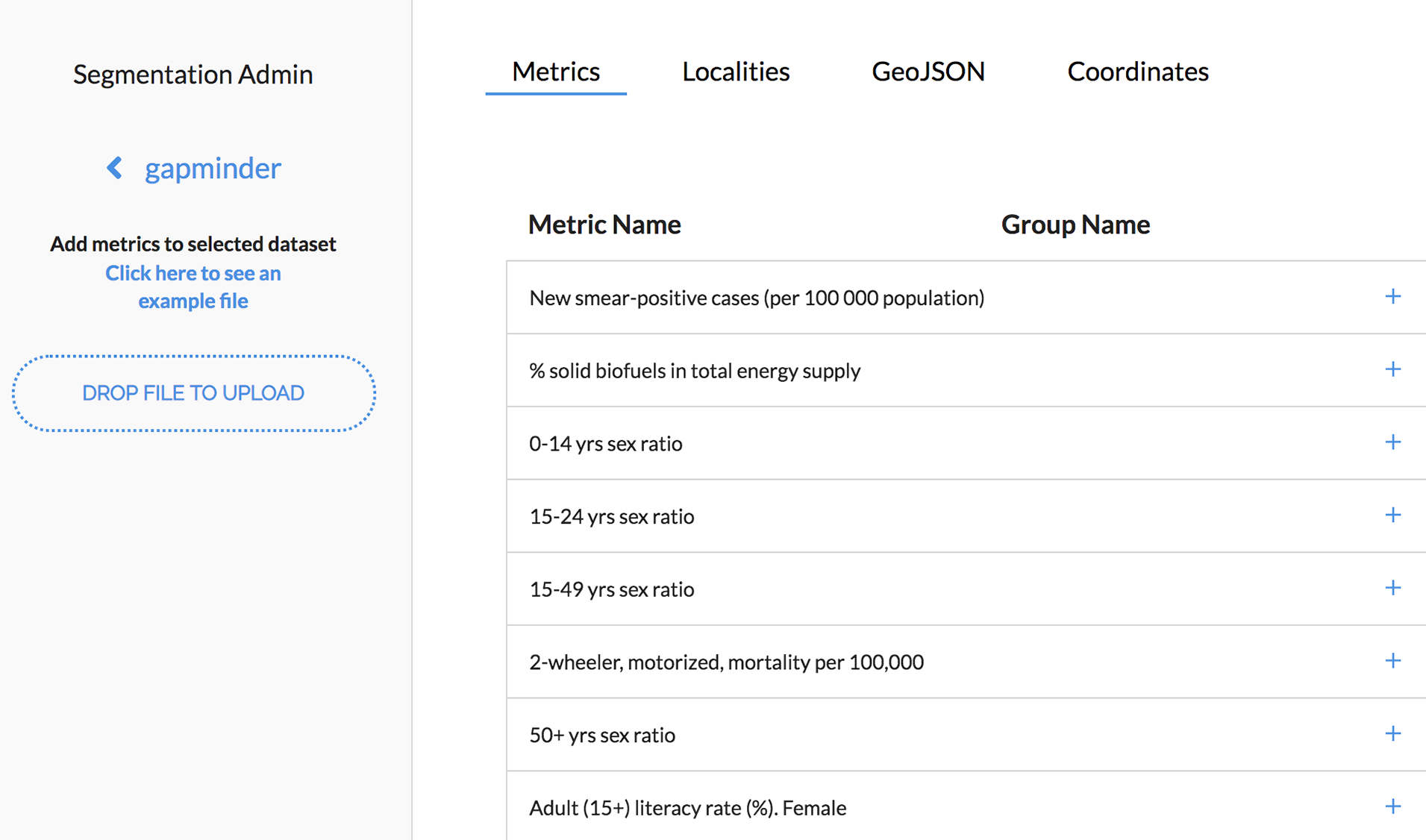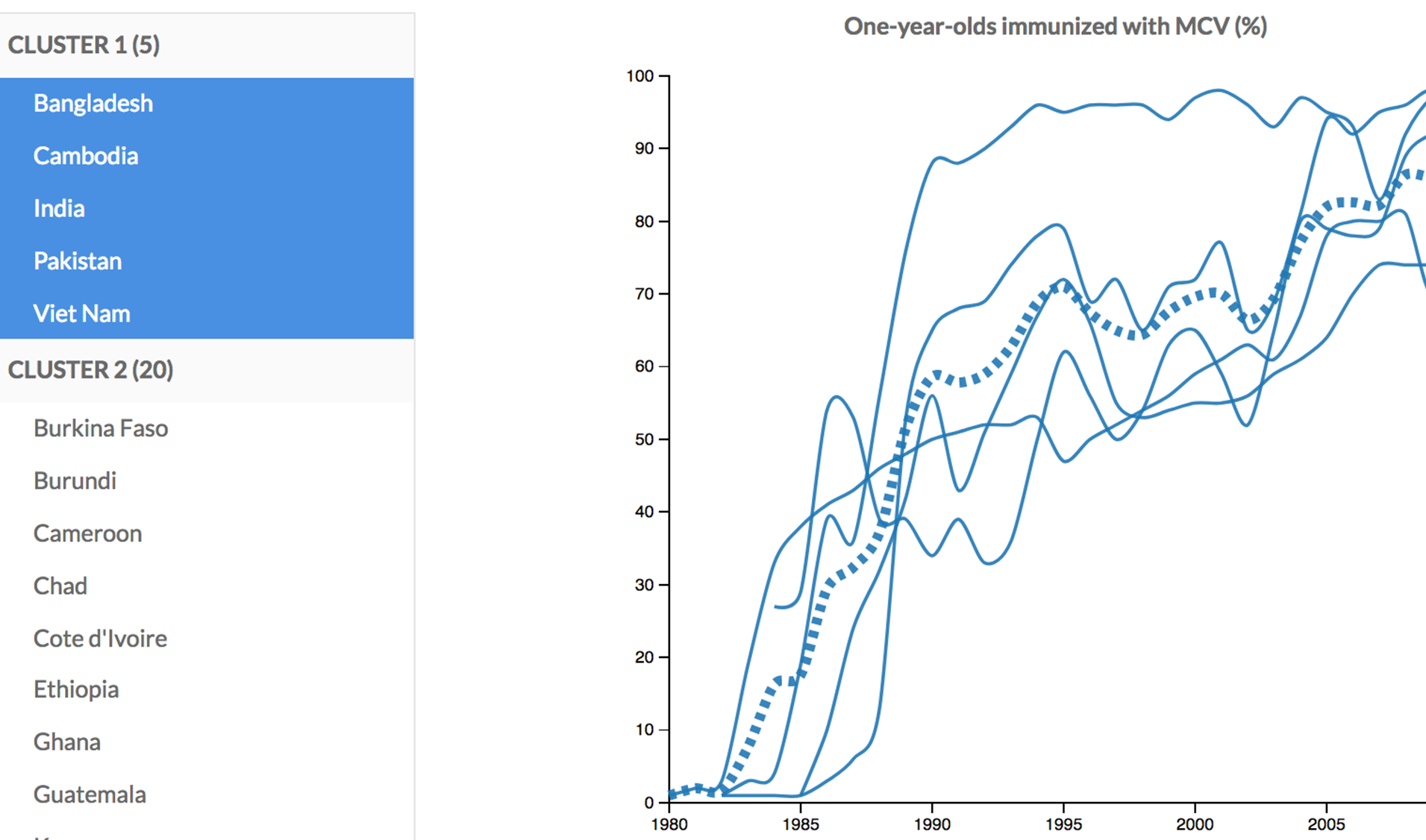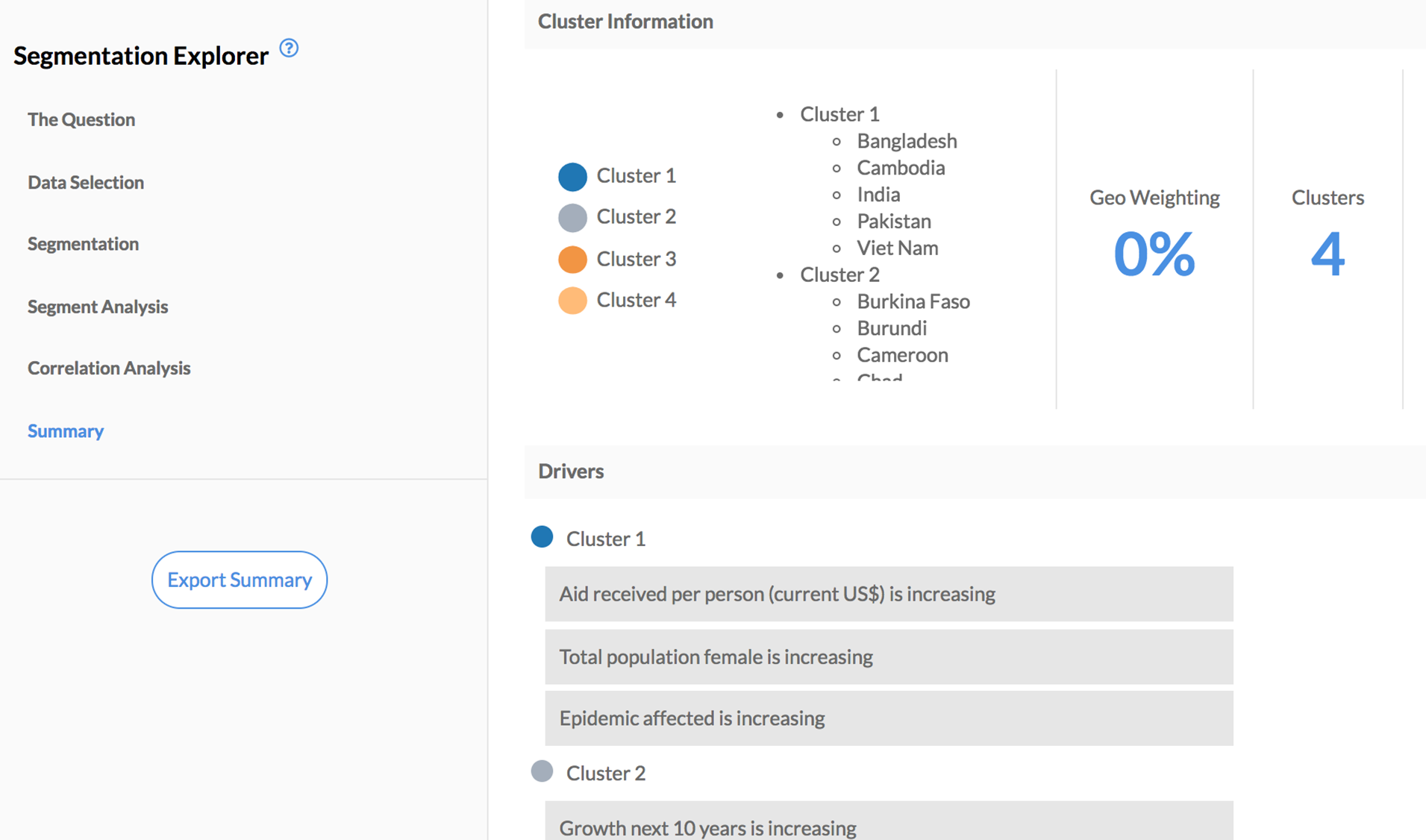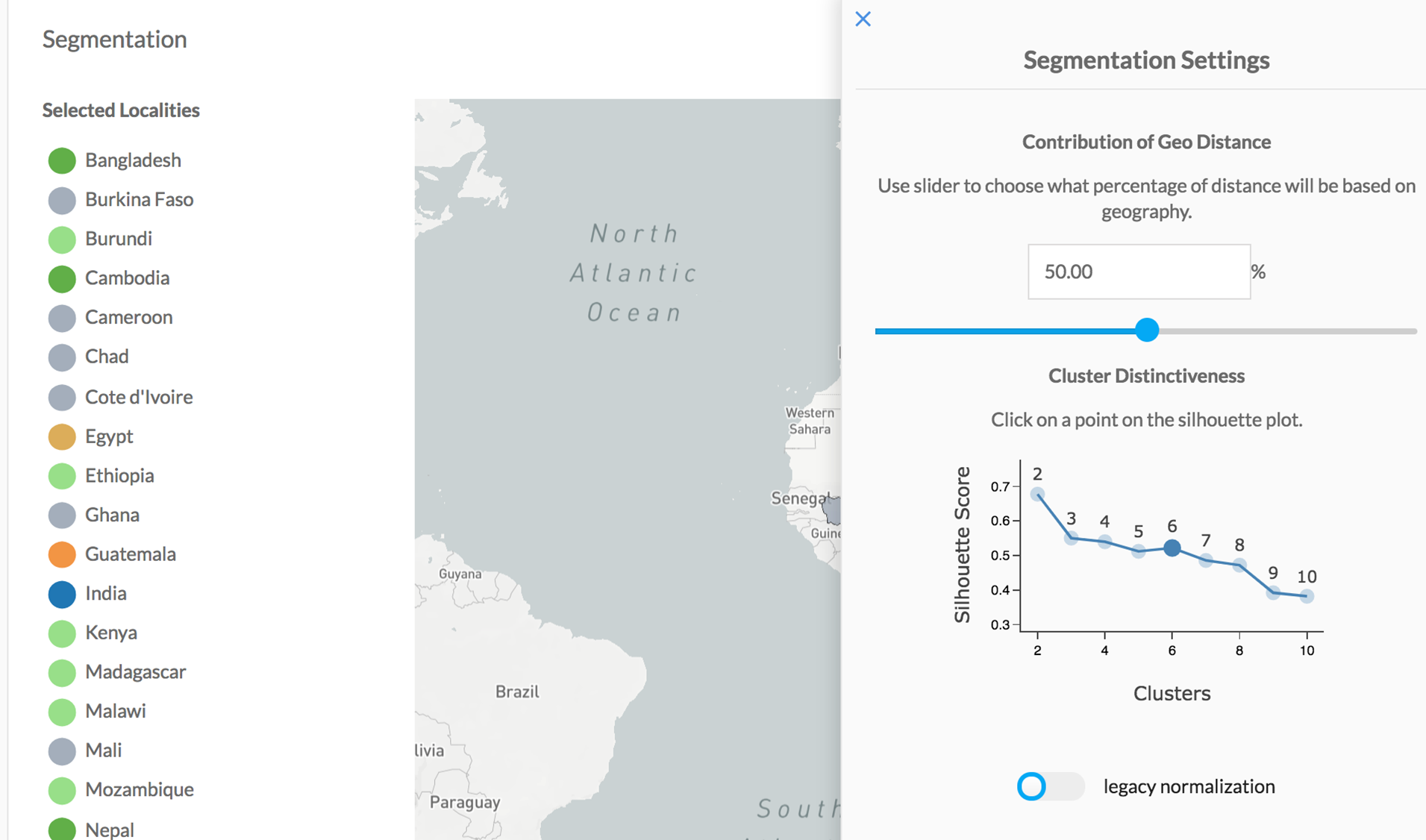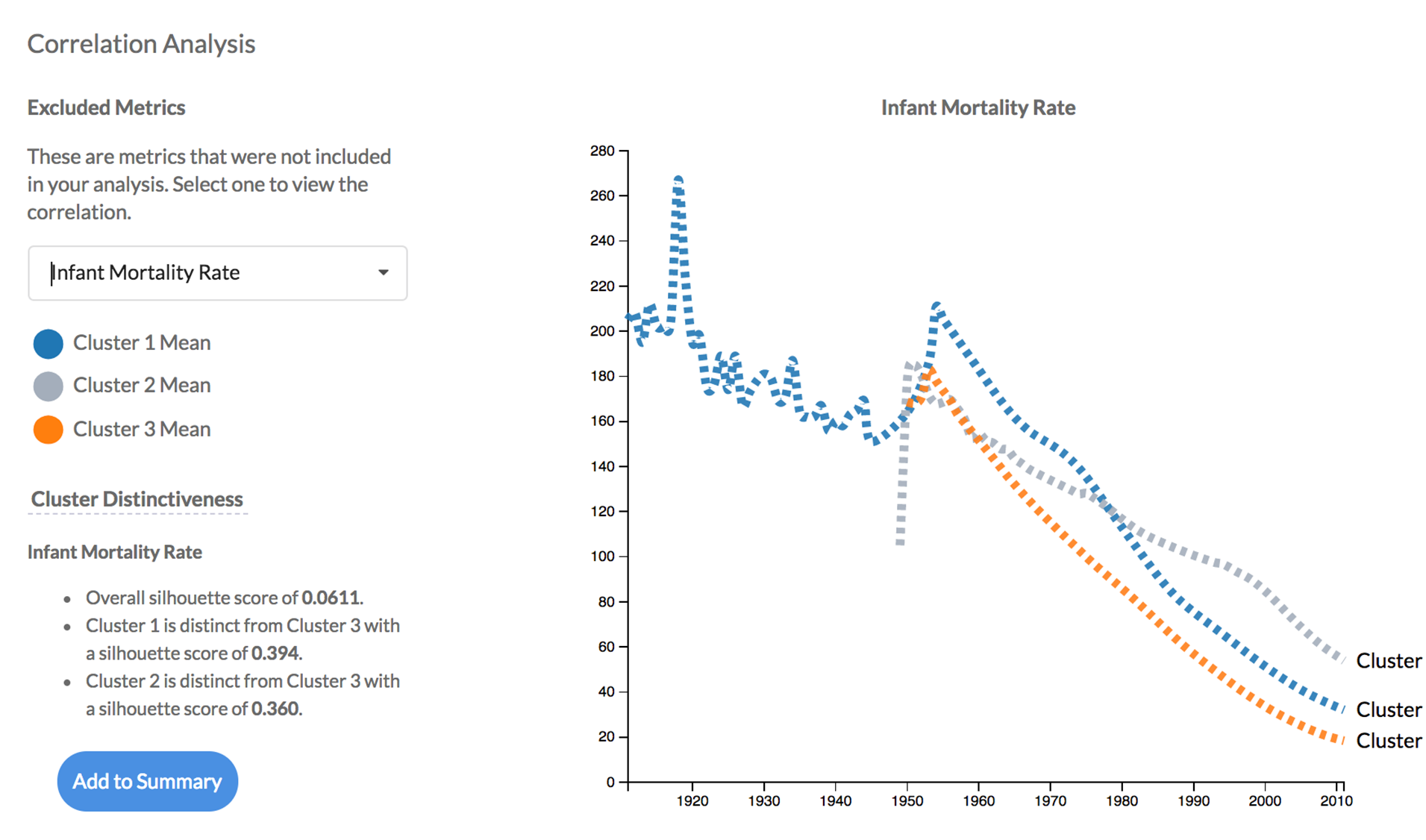Policy interventions can have widely varying results when implemented in different places. It is challenging to know whether the lack of effectiveness is due to an ineffective policy or an effective policy injected into the wrong environment. Similarly, when a country experiences an effective policy intervention, it may be difficult to know which other countries are the best candidates to replicate that success. This tool provides a data-driven way to discover country-country peer groups – a new way to address these challenges.
INTENDED USE
This tool is intended to be used by scientists and researchers to explore state, country, or region-level similarities and differences, and help develop hypotheses about policy intervention efficacy.
Access Tool
Demos primary use case and functionality of tool
STAGE OF DEVELOPMENT
In Beta Testing
WORKING TEAMS
Dave King, Joshua Southerland, Kent Morgan, Jack Kinsey, Derek Grape
The challenge
The challenge that led to the creation of this tool was to determine whether a precision medicine approach could be applied to global policy, resulting in more precise and effective intervention recommendations.
In medicine, outwardly visible presenting symptoms may be driven by variations in underlying biology. Patients who have type 1 or type 2 diabetes may have uncontrolled blood sugar, and the presentation may be similar for HER2+ and HER2- breast cancer. Yet, the optimal treatment for subclasses of these diseases may vary. Before precision medicine, we did not have the tools to tease out the subcohorts that comprised many patient populations; as a result, we provided only partially effective treatments to groups that we wrongly viewed as homogenous.
In healthy birth, growth, and development, we still struggle with an imprecise view of the world that overly homogenizes countries based on outwardly visible factors such as geographic location. However, countries that have similar levels of stunting may vary in other dimensions. A policy intervention that was successful in a country with good infrastructure might not be successful in a country ravaged by war.
It may not always be clear what factors contribute to the environment in which an intervention succeeds or fails. Therefore, we worked to create a new set of tools that would illuminate country-level heterogeneity and lay a foundation for precision policy.
Precision medicine was impossible before advances in genetic sequencing enabled us to see heterogeneity that previously was hidden. Similarly, the first step in achieving precision policy may be the development and use of tools, such as the Country Segmentation tool, to improve clarity about the nuances of regional differences.
